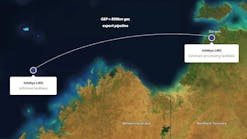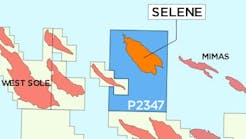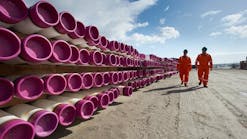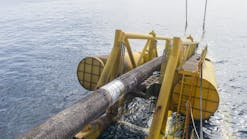For the time being at least, the small island nation of Trinidad & Tobago has more gas than it knows what to do with. New finds confirm that there are further untapped reserves in different areas than earlier discoveries. And this is without any major finds in deep or ultra deepwater. The island, for its part, has a master plan to develop reserves in a gradual way that coincides with the capacity of the Atlantic LNG project.
As new LNG trains come online, production will ramp up to meet these demands. With natural gas prices holding steady, the US government is making only half-hearted efforts to replenish its flagging stocks. Meanwhile, proposals are on the table to build new LNG receiving facilities in the Gulf of Mexico to increase the country's ability to import gas and feed its growing demands.
LNG is a cost-sensitive source of energy. If gas discoveries in the US Gulf of Mexico were to increase rapidly, assuming these finds were within reach of the region's elaborate pipeline infrastructure, the relatively cheap gas would dramatically impact the country's demand for LNG. As things now stand, this does not appear to be a concern. Still, LNG is the most expensive transportation solution and cannot hold its own against a pipeline over the short haul. But, for the high volume transported and the great distance covered, LNG is clearly the way to go. Building and maintaining a pipeline system from Trinidad to the US Gulf, for example, is out of the question, and the only other option anyone seems to come up with is CNG. For the distance and volumes, CNG simply can't move enough gas to offset the cost.
So, for long distance markets, it appears LNG is the way to go, at least for the near-term. For close-in markets, pipelines cannot be beat. They can be built and installed rather quickly using well-established technology and readily available equipment. Once the field for which the line was constructed plays out, others typically take its place. The Gulf of Mexico is covered with such lines, and they increase their reach into deepwater, spreading with each new discovery.
It appears that these two solutions can account for all the world's transportation needs, both near and far.
But that's not quite the end of the story. In the Caribbean, the mid-range goes wanting. It could perhaps be serviced by a pipeline from a strictly technological and engineering standpoint, but such a line would be both economically and politically impossible to achieve. On the other hand, an LNG tanker would need a massive market to justify making the short hop for such markets, not to mention the substantial cost of installing LNG terminals on all of these islands. The needs of these islands are relatively small, but growing. Ready access to cheap energy could spur this growth and increase prosperity. With that goal in mind, there has long been talk of a trans-Caribbean pipeline, but the politics of building a line that jumps from island to island delivering a little gas at each stop has been understandably frustrating. Is it possible this could be the market CNG has been waiting for?
The Caribbean nations are growing, but their power demands are still modest. Jamaica, for example, wouldn't be able to use 100 bcf of gas, one tanker full of LNG, in a year. Many oil fields off of Trinidad have associated gas in quantities too small to justify sale. In the past, such gas was flared. Now the associated gas is used to power the production platform or re-injected to maintain reservoir pressure. While this gas does not exist in quantities that are attractive to the LNG market, it would be enough to supply many of the nearby island nations. The key would be a method of transport that is cost effective in moving small amounts of gas a short distance.
If the gas is mixed with water and converted into hydrates, it can be stored at a cooled temperature on a conventional tanker and transported to these islands from Trinidad. The size of the system needed to convert the gas and water to hydrates is relatively small. The volume of gas such a system accommodates cannot compete with LNG, but for nations with an acute need for a small amount of gas, and, incidentally, fresh water, this could be the low-cost solution to some low-profile problems.
William Furlow




